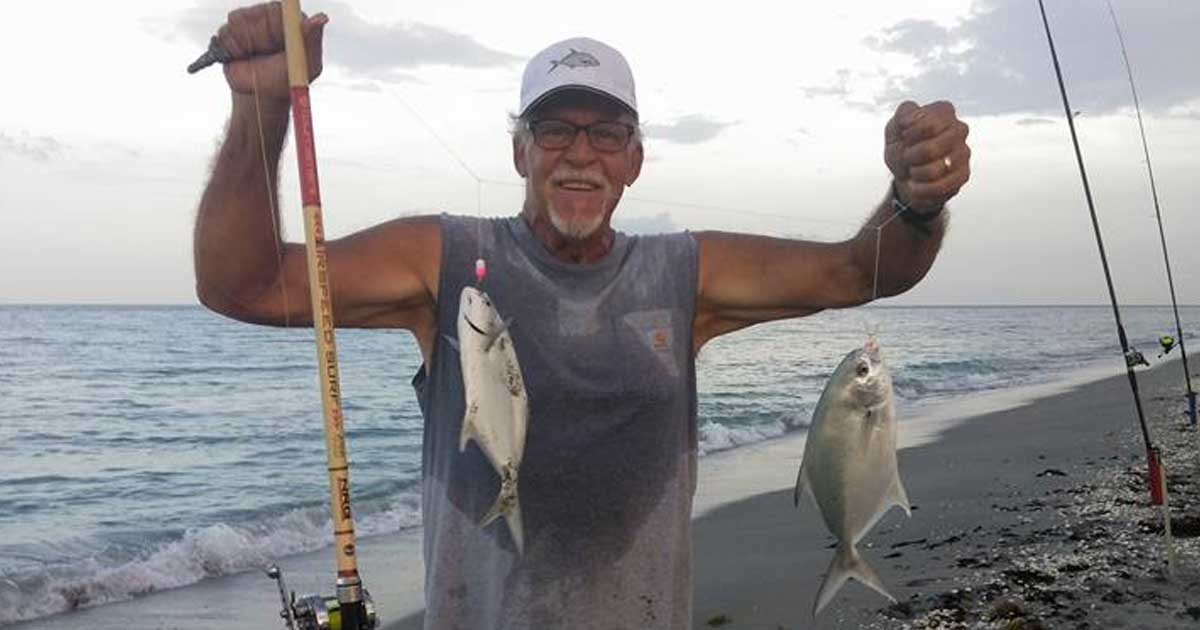
No winters are predictable in Florida. What tail end of which Jetstream dip will enter our space next? The clash of highs and lows. The aftermath of an Artic Front. Rip currents pushing bodies of cold water south. These all make for some tough equations for a surf fisherman to encounter.
These are the current problems we are dealing with. The most successful beach guys follow the sea temp charts. The most valuable is the SST application, Sea Surface Temperatures by region. Jacksonville was 63° a week ago, and today it’s 68 degrees. Blustery Southeast winds (25 knots) moved warmer Gulfstream waters to the north. Does this excite the pros in Fernandina? YES it does!
Does the average angler have to be astute to these changes? I think so… SST uses thermistors to measure temperatures of seawater. We can purchase Infrared thermometers from Amazon, Harbor Freight and Walmart. Wouldn’t it be cool to point a gun and shoot a beam at the seaside water and get an immediate digital calculation?!? It can be done for about $12.00. It’s always amusing to report to your fellow spikers Fahrenheit and centigrade readings out on the beach.
Perhaps creating a simple log of barometric readings and water readings will also produce a payoff. What if you throw in a bit of solunar cycle and learn the names for each full moon? Make it interesting and read what the Indians understood about fishing and hunting in reference to the moon!
Enjoying analysis adds to an anglers repertoire. Are you ready to fish the wind? It’s tackle evaluation time. Does your rod have to be long? How about the rod taper? Are you using braid, and what about your sinkers…? If you want to fish big chop and not have your sinkers slide down the beach, then length is a factor. For me, 11 to 13 ft gets me distance and wave clearance. Certain beach contours dictate distance… Sure, in the spring they could be fifty feet out. Taller rods are also less effected by seaweed.
I’ve been teaching surf tutorials for 15 years and the most important detail is rod ratings! I fish a 3 to 6 ounce rating with a fast taper tip action, with a line rating ranging from 12 to 17 lb test. Being older, I need a light “All Day Rod,” and almost always it is a composite graphite rod. It cuts the wind, derives little effort and maintains a 4 ounce sinker in 20 mph littoral wind. Every bite shows and most hook ups don’t fail. Read your rod rating. If it’s medium to heavy and rated 20 to 30 lb, then braid is fine, if you know how to power it out.
I use a fluoro-coated mono in high-visibility yellow, 14 lb test. This provides for no line swale and no sinkers sliding into my neighbors lines. In the winter, I’ll also use elliptical shaped sputniks to cast bullets and achieve 20 to 30 feet with any rod. Braid swales and stiff rods pull sinkers off the bottom during modest seas.
Current conditions are settling down folks. A few days after this waning full moon, and the bite will be ON! Perhaps some of the suggestions I have offered in this column will benefit you in some way… I’m happy to field any questions in the comments below, or via email at Richvidulich777@hotmail.com.
Tight Lines!!!


Thanks for the tips Rich. I am new at the surf fishing and really appreciate your expertise. I’ve found a lot of good information here at spacefish. Your advice on line and rod selection hits home. I hadn’t paid that much attention to rod tapper and sensitivities before, but know after building some rods am really seeing the difference it plays on hookups. Thanks again and always look forward to your insight.
Love your comments and tips. Keep up your great work. I have a rod for you to look at and please tell me what you think. I use this rod every time I surf fish and so far I love it. Strong and lightweight .! 4-8 oz with a fast tip.
Great information Rich! I know water temperature has an effect on everything aquatic, and some days in the 60’s and overnight lows in the 40 and 50’s. Is it best to wait for warmer days?